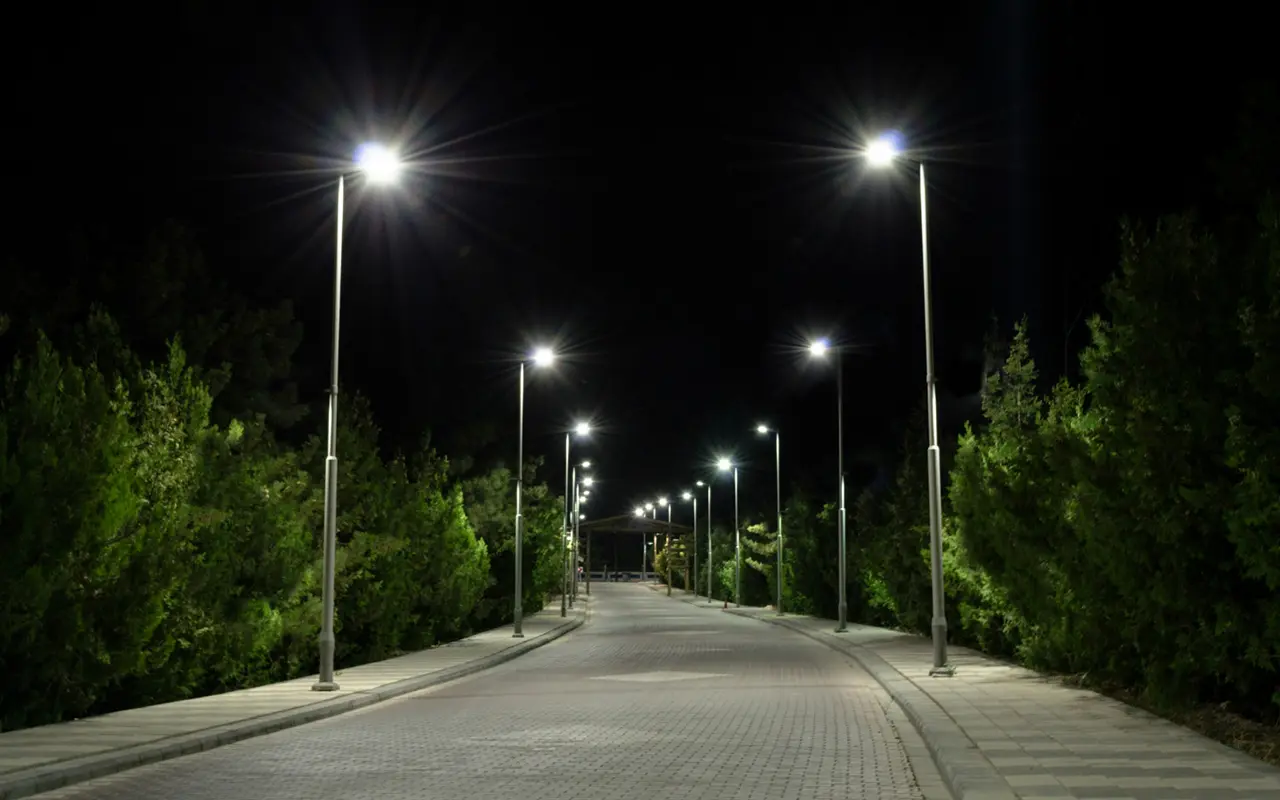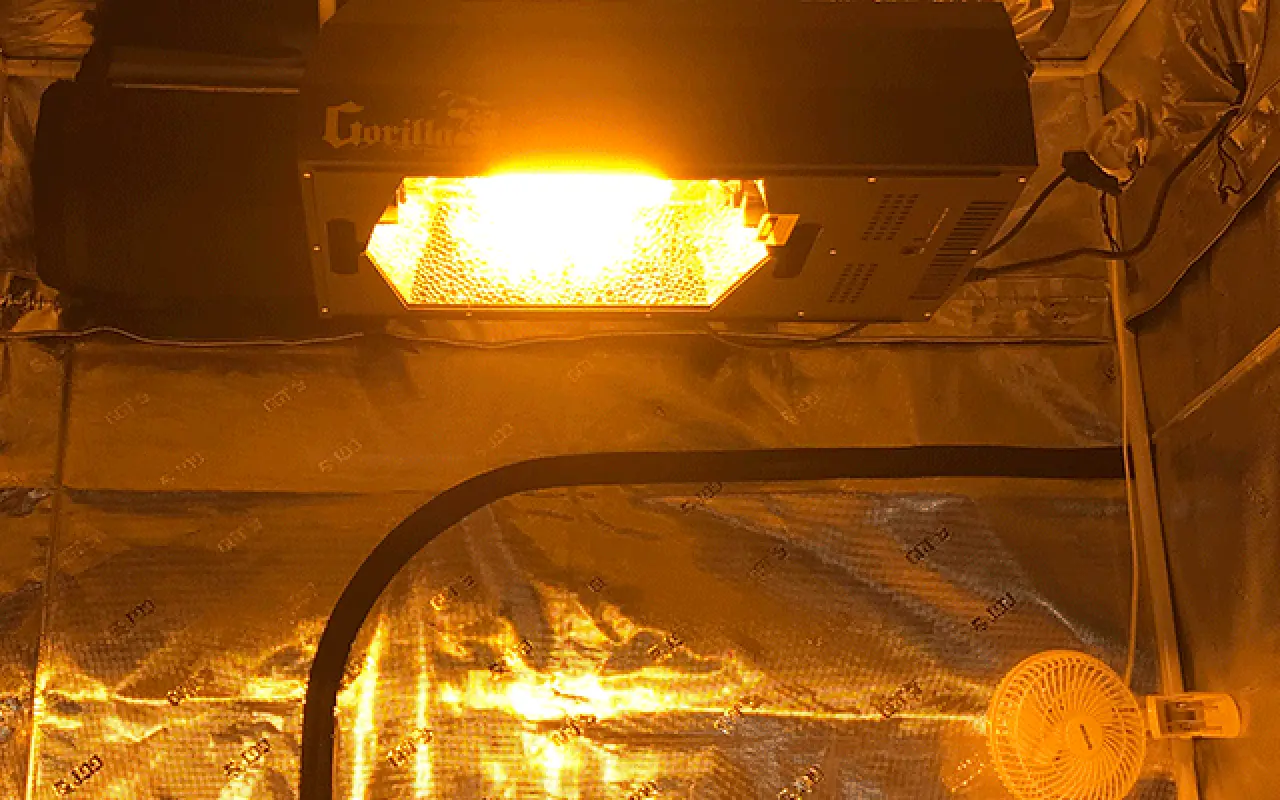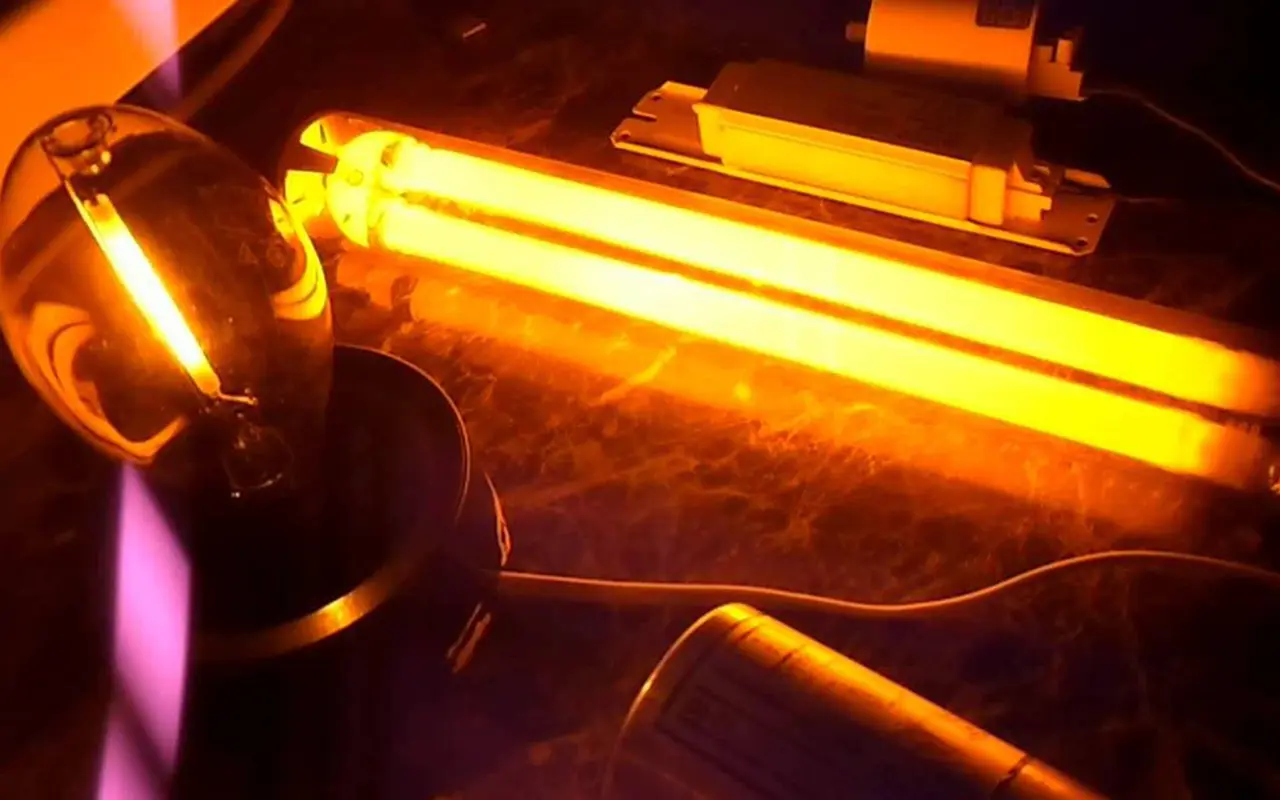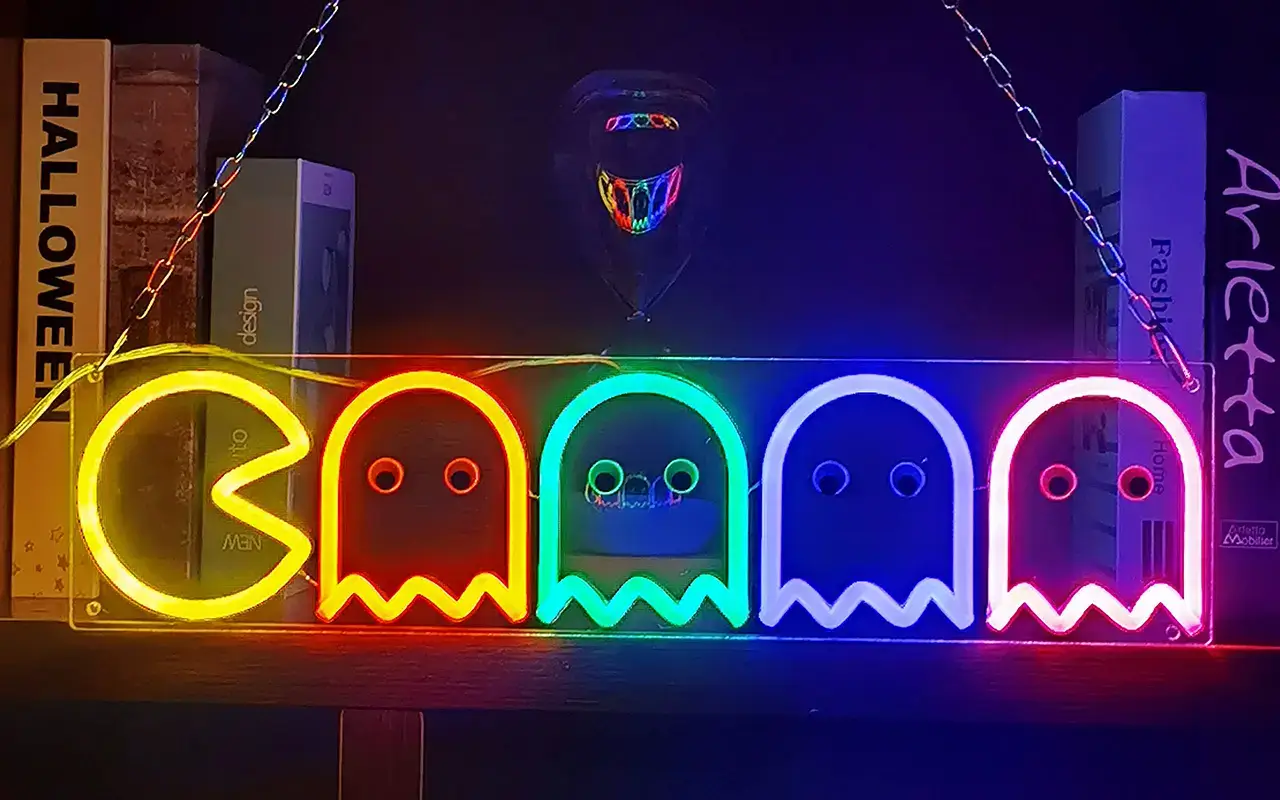Navigating the labyrinth of lighting options, from LED to High-Pressure Sodium (HPS) and Low-Pressure Sodium (LPS), presents a challenge. Each choice impacts your budget, carbon footprint, and safety, with varying pros and cons. When comparing LED vs HPS or LPS, consider factors like energy efficiency, lifespan, light quality, and environmental impact to determine the best fit for your lighting needs, whether it’s for a cozy bedroom or an expansive parking lot.
Understanding The Basics
Energy Usage
Regarding lighting options, one of the critical metrics to evaluate is energy consumption. LED technology consumes 40-75% less energy than High-Pressure Sodium (HPS) lamps. This isn’t just a win for your electricity bill; it’s a major plus for sustainability. By opting for LEDs, you’re not just illuminating your space; you’re doing it in the most energy-efficient way possible, potentially saving hundreds or thousands of dollars over the light’s lifespan.
環境への影響
In an age where carbon footprints are scrutinized, the environmental impact of your lighting choices cannot be ignored. LEDs come out on top with a significantly smaller carbon footprint. They’re not only energy-efficient but are also less hazardous to dispose of compared to sodium-based lights. Unlike High-Pressure and Low-Pressure Sodium lamps that may contain small amounts of dangerous materials, LEDs can often be safely recycled, making them an environmentally responsible choice.
What is LED Lighting?
How LED works
LED stands for Light Emitting Diode, and its operating principle is straightforward yet ingenious. LEDs emit light when electrical currents pass through a semiconductor. This simplicity contributes to their reliability and long lifespan. They’re more than just an energy-efficient alternative; they represent the next stage in lighting technology, adapting to various environments and needs.
Pros and Cons
Pros:
LEDs have many benefits, such as high energy efficiency, long operational life, and excellent color rendering capabilities. They are versatile for various applications, from street lighting to interior design.
Cons:
The only downside often cited is the higher upfront cost. However, this is rapidly changing as technology advances and economies of scale come into play. Over time, long-term energy savings usually offset the initial investment.
High-Pressure Sodium Lights Explained
How they function
High-pressure sodium (HPS) lamps produce light by passing an electric current through a ceramic tube containing sodium particles and various gases. While durable and capable of emitting intense light, their inner workings make them less energy-efficient than LEDs.
Pros and Cons
Pros:
HPS lights are well-regarded for their durability and lower initial costs. They are also versatile enough to be used in harsh environmental conditions, making them a traditional choice for industrial applications.
Cons:
These lights have drawbacks, such as poor color rendering and higher energy consumption. Their efficiency pales compared to LEDs, requiring more frequent maintenance, adding to long-term costs.
Low-Pressure Sodium Lights Uncovered
Operating Mechanism
Low-pressure sodium (LPS) lamps are similar to their high-pressure counterparts. Still, they could be more efficient and offer better color rendering. They still operate by passing electricity through sodium particles and gases but often require more energy for the same amount of light output.
Pros and Cons
Pros:
These lights can be highly energy-efficient in specific, limited applications and come at a relatively low initial cost.
Cons:
The trade-off is their inferior color rendering, making them unsuitable for applications where color differentiation is important. They also have more limited applicability compared to other lighting options.
Core Differences Between LED and Sodium Lights
効率性
Regarding lighting, efficiency is critical, and LEDs are the undisputed champions. Utilizing state-of-the-art technology, LEDs are designed to minimize energy waste, reducing your utility bills and carbon footprint.
Light Quality
One of the most compelling advantages of LED lighting is its superior light quality. The brilliance and vibrancy of the emitted light are unparalleled, greatly enhancing the ambiance of any given space.
長寿
The incredible lifespan of LEDs, ranging between 10-15 years, is one of their most defining features. The choice becomes clear compared to High-Pressure Sodium (HPS) lights, which may last just half that time.
Efficiency Metrics
Energy Consumption Over Time
To understand efficiency, one must consider long-term energy usage. LEDs consume up to 75% less energy than their HPS counterparts over their lifespan. This isn’t just a one-time saving; it’s a decade-long advantage.
エフィカシー
“efficacy” refers to how well a light source converts electrical energy to light. LEDs are superb in this regard, turning more of your electricity into usable light, thus further enhancing their efficiency.
High Pressure Sodium Lights vs LED Energy Consumption
LED lights consume significantly less energy than high-pressure sodium (HPS) lights. LEDs are more efficient, converting more electricity into light with less waste as heat. An LED can use up to 75% less energy than an equivalent HPS light for the same light output.
Quality of Light
演色評価数(CRI)
LEDs boast a high Color Rendering Index (CRI), making colors appear incredibly vivid and true to life. This characteristic is essential for tasks requiring color differentiation and contributes to creating visually appealing environments.
Color Temperature
The color temperature of LED lighting tends to mimic natural daylight, which is pleasing to the eye and provides excellent visibility. This makes them particularly useful for workspaces, retail environments, and other areas where visibility is crucial.
Lumens
Regarding brightness, LEDs produce more lumens per watt than HPS lights. In simpler terms, you get a brighter output for less energy consumption, making LEDs a smarter choice for virtually all lighting needs.
Reliability and Lifespan
Failure Characteristics
Unlike HPS lights that can fail suddenly and without warning, LEDs typically dim over time, providing a gradual indication that replacement is needed. This reduces the risk of unexpected outages, contributing to their reliability.
Maintenance Needs
A significant aspect of LEDs’ long lifespan is their low maintenance requirement. Their robust design and advanced technology reduce the need for frequent replacements or repairs, contributing to lower operational costs over time.
Costs and ROI
Initial Investment
Although the upfront cost of LED lighting systems can induce sticker shock, the value emerges over time. LEDs are a financially wise choice for any long-term project when considering their remarkable longevity and energy efficiency.
Operational Costs
Long-term Energy Bills
LED照明に投資する最も大きなメリットは、長期的なエネルギー料金の大幅な削減です。初期の出費はかさむかもしれないが、運用コストの節約によってこの出費は急速に回収され、多くの場合数年以内に回収されるため、総所有コストはお買い得となる。
メンテナンス費用
LED技術のメリットとして見落とされがちなのが、メンテナンスにかかる費用の節約だ。頻繁な電球交換や器具の修理が必要な高圧ナトリウム(HPS)照明とは異なり、LEDの頑丈さとメンテナンスの手間の少なさは、ダウンタイムの短縮と運用効率の向上に貢献します。
理想的なアプリケーション
汎用性の高いLED
LEDはエネルギー効率が高いだけでなく、驚くほど汎用性が高い。その高品質な光出力は、居心地の良い住宅環境から、重要度の高い商業環境まで、さまざまな用途に適しています。この適応性により、LEDは複数の美的・実用的ニーズを満たすことができるのです。
過酷な環境に対応する高圧ナトリウム
高圧ナトリウム(HPS)照明が、今なお支持されている状況がある。特に、産業現場や高ワット数の照明が必要な地域では、HPSライトの堅牢性と耐久性が不可欠です。
ニッチケース用低圧ナトリウム
低圧ナトリウム灯は、演色性が重視されない駐車場やセキュリティの境界など、高度に特殊なシナリオに適しています。低圧ナトリウム灯は、特定の狭い用途に対して、よりエネルギー効率の高い、的を絞った効率的な照明ソリューションを提供します。
ナトリウム灯:死にゆく品種?
市場動向
LED技術は急速に照明業界に革命を起こし、ナトリウム灯のような旧来の技術を陳腐化させつつある。消費者や企業は、エネルギー効率から長寿命に至るまで、LEDの数多くの利点をますます認識するようになり、市場の嗜好が大きく変化している。
採用率
この急成長するトレンドを無視することは難しい。さまざまな分野の企業が、かつてない勢いでLED照明に切り替えているのだ。完璧な雰囲気を求める小売店や、運用コストの削減を目指す工場では、LEDが主流になりつつあり、ナトリウムベースの照明ソリューションの市場シェアはさらに縮小している。
比較表
| 比較の要因 | LED | 高圧/低圧ナトリウムランプ | 優勝 |
|---|---|---|---|
| 演色評価数(CRI) | 優れたCRI、通常は70以上 | CRIが低い。 | LED |
| ウォームアップ時間 | 即座に点灯、ウォームアップ不要 | タイプにより3~15分のウォームアップ時間が必要 | LED |
| 色温度範囲 | ウォームからクールまで幅広いレンジ (2700-6000K) | 黄色味を帯びた色合いに限定(1900~2200K) | LED |
| 寿命と耐久性 | 寿命は最大50,000時間以上、メンテナンスは最小限 | 寿命は12,000~24,000時間、信頼性は低い | LED |
| エコフレンドリー | 有害物質を含まず、環境に優しい | 少量の水銀を含む。 | LED |
| エネルギー効率 | 高強度出力時の消費電力が少ない | 効率が悪く、同程度の出力を得るにはエネルギー消費量が多くなる | LED |
| 初期費用 | 一般的に初期費用は高い | LEDに比べて初期費用が安い | ナトリウム |
| メンテナンス費用 | メンテナンスが容易で、交換の必要がほとんどない | メンテナンス性が高い。 | LED |
| 低温で動作 | 低温で効率的、強度が低下しない | 寒冷条件下での照明強度の低下 | LED |
| 照明演出 | 180°をカバーする単方向性 | 全方位、360°をカバー | LED |
| 一貫した照明 | 寿命まで安定した出力を維持 | 規定の寿命に達する前に劣化する傾向がある | LED |
| 寿命 | 平均50,000~100,000時間 | LPS:12,000~18,000時間、HPS:最大24,000時間 | LED |
| 廃棄 | 安全で無害な廃棄 | 可燃性リスクによる特別な廃棄手順 | LED |
| 熱の放出 | 低発熱 | 同じ光出力でより多くの熱を発生させる | LED |
| サイクルタイム | ちらつきのない瞬時のオン/オフ切り替え | 急速なオン/オフのサイクル中にちらつくことがある | LED |
| サイズ | 多用途;様々なサイズがある | 一般的にサイズが大きく、汎用性が低い。 | LED |
よくある質問 (FAQ)
LED照明のイニシャルコストは割に合うか?
LEDは、高圧ナトリウム(HPS)照明に比べて初期費用が高いのは事実ですが、購入後のことを考えることが重要です。LEDは、エネルギー消費量とメンテナンスコストの両方において、長期的に大幅な節約を実現します。さらに、その寿命は10年を超えることが多く、HPSライトはもっと早く故障する可能性があります。二酸化炭素排出量の削減と優れた光質を考慮すれば、LED照明への初期投資は、時間の経過とともに10倍になって返ってくる。つまり、長期的な費用対効果を考えるなら、LEDが明らかに勝者なのだ。
LED照明は屋外使用に適しているか?
もちろんです!LEDは、その優れた効率性など、いくつかの理由から屋外での使用に優れています。より多くの電力を光に変換するため、広範囲での使用に最適です。さらに、光のスペクトルが広く、演色評価数(CRI)が高いため、駐車場や庭園、道路などの屋外環境での視認性が向上します。耐久性に優れ、さまざまな気象条件にも耐える。LEDは、環境にやさしく、見た目にも美しい屋外照明ソリューションです。
LEDはなぜエネルギー効率が高いのか?
LEDは、最大75%の少ないエネルギー消費で、ナトリウムの同等品より優れている。この驚くべき効率は、電気エネルギーを熱ではなく光に変換する能力に由来します。そのため、空間をより効果的に明るくするだけでなく、消費電力も大幅に削減できます。この特徴は、エネルギー代と環境への影響を削減したい人に最適です。
LEDの光質はナトリウム灯と比較してどうか?
LEDライトは演色性に優れ、対象物の本来の色をより正確に表現します。そのため、小売店やアートギャラリー、あるいは自宅など、視覚的な鮮明さが最も重要な環境に最適です。さらに、ナトリウムランプが発する厳しく不自然な光とは異なり、視認性に優れた「昼光色」を発します。
LEDライトはどのくらいの頻度で交換が必要か?
LED照明の魅力のひとつは、その寿命の長さです。突然故障することがある高圧ナトリウム灯とは異なり、LEDは長期間(多くの場合10年以上)にわたって徐々に暗くなります。つまり、交換の心配をする時間を減らし、安定した高品質の光を楽しむ時間を増やすことができるのです。
ナトリウム灯は時代遅れになるのか?
ナトリウム灯が完全に時代遅れと断言するのは正しくないかもしれないが、LEDが急速に市場シェアを獲得しつつあるのは明らかだ。エネルギー効率から優れた光質まで、LEDが持つ数多くの利点が、消費者の嗜好の変化に拍車をかけている。LED技術が進歩すればするほど、その差は広がるばかりで、ナトリウム灯の住宅用・商業用としての魅力は薄れていく。
LEDはさまざまな環境に適応できるか?
LEDは驚くほどの汎用性を持っています。住宅用、商業用、さらには工業用環境にも同様に適しています。LEDは、作業場でピンポイントの精度が必要な場合でも、カフェで暖かい雰囲気が必要な場合でも、対応できます。色温度の幅が広く、CRIが高いため、ほとんどの状況に適応できます。
LED照明のメンテナンスの必要性は?
LED照明の知られざるメリットは、メンテナンスの手間が少ないことだ。頻繁な電球交換やバラスト交換が必要なナトリウム灯とは異なり、LEDはメンテナンスの回数が大幅に少なくて済みます。これにより、メンテナンスコストを削減し、長期的な価値を高めることができます。
LEDが環境に与える影響
LEDは地球のことを考えて設計されています。消費エネルギーが少ないため、二酸化炭素排出量を即座に削減できます。さらに、他の照明のように有害物質を含まないため、より入手しやすく、廃棄も安全です。LEDは、環境に優しい選択をしたいのであれば、正しい方向への一歩です。
LEDは照明の未来か?
優れた効率、適応性、そして下がり続けるコストにより、LEDは照明技術の未来になる準備が整っています。私たちのエネルギー意識が高まるにつれ、効率的で長寿命、環境に優しい照明ソリューションへの需要が高まるでしょう。LEDは、このような進化するニーズを満たすのに十分な機能を備えており、ほとんどすべての用途で将来性のある選択肢となります。
結論
適切な照明を選ぶことは、単に美観や目先のコストの問題ではなく、将来への投資なのです。その波及効果は、電気代から二酸化炭素排出量にまで及びます。LED照明とナトリウム照明のニュアンスの違いを理解することで、あなたにも環境全体にも有益な、情報に基づいた決断を下すことができます。
LED照明は、事実上すべての面で明らかに勝者として浮上している。効率、光の質、適応性という点で、ナトリウム灯を凌駕している。エネルギー意識がますます高まる中、LEDは多くの用途に対応する将来性のあるソリューションとして際立っている。そのため、LED技術への投資は、持続可能な未来のための選択肢というよりも、むしろ必然なのです。
この詳細な分析は、最適な照明技術を選択するための道筋を示すことを目的としています。コスト、実用的なアプリケーション、市場力学まで掘り下げて、賢明な決断に必要なツールを提供します。
まとめると、照明の未来は、その比類ない効率、汎用性、長期的価値から、まぎれもなくLEDに傾いています。このような照明の選択肢の中で、ユニトップ-中国のリーディングカンパニーをご検討ください。 LEDストリップライト そして LEDネオンフレックス メーカーLED業界における当社の専門知識は、他の追随を許しません。ご遠慮なく ご連絡 ご不明な点や具体的な照明のご要望がございましたら、お気軽にお問い合わせください。より賢く、より明るく、より持続的に、あなたの世界を照らします。

トムは現在、セールスマネージャーとして ユニトップ(中国)有限公司.になっているそうです。 LED照明 2005年入社。セールス&マーケティング、工場管理の専門家である。ボディビルが好きで、熱狂的なアップルファンでもある!努力家で、新しいことを学び、試すのが大好きです。
電子メール tom@unitopledstrip.com WhatsAppです: +86-18680307140








返信を残す
ディスカッションに参加したい方はこちらお気軽にご投稿ください!